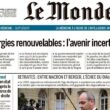The US subsidiary of Haymarket Media Group has acquired the Florida-based National Association for Continuing Education (NACE) which provides live and online education programs for doctors. Although financials have not been disclosed, it is believed to have revenues of under $10m and will increase Haymarket’s medical information revenues by 10%. NACE annually organises 40 regional conferences, and will add 53,000 learners to Haymarket’s audience of 2.2m healthcare professionals.
The admittedly modest acquisition almost marks the rehabilitation of the 53-year-old UK-based magazine publisher whose borrowings of more than £140m had once threatened its viability. The privately-owned group has been a dominant UK player both in B2B and specialist consumer media for more than 50 years, but found itself caught in a perfect storm. The post-digital shredding of print profits was accelerated by Haymarket’s own decision to debt-finance the buyback of large minority shareholdings from key executives who had managed the business for more than 25 years during founder Michael Heseltine’s political career, latterly as the UK’s Deputy Prime Minister.
After a prolonged wobble, the company succeeded in eliminating its debt through property disposals, staff cuts, and the sale of 20 magazine, event and digital brands. A lot of pain. But, in 2017-18, Haymarket’s revenue was £163m (slightly down on the previous year) giving operating profit of £7.4m. While even that profit is flattered by some discontinued earnings, it is a picture of transformation.
The disposals of the past six years tell the story of a company that has had to be as opportunistic in selling magazines as it had so often been in buying them. In 2016, it sold Motorsport, Motoring News, F1, and Autosport – magazine brands which had been at the core of the company’s long-time passion for motoring media. But the proceeds of some £13m were certainly useful.
Last year, it netted £14m (perhaps 30 x EBITDA) for five typically-Haymarket consumer magazines (including Stuff, FourFourTwo, and What HiFi?) sold variously to Future and Kelsey. Along the way, Haymarket sold, for nominal prices, six predominantly B2B magazines and events which may now account for 15% of the £50m revenue of the fast-growing Mark Allen Group. Last year, Haymarket even sold one of its great digital successes, PistonHeads , which it had transformed from a nerdy audience of 900k to 4m monthly uniques in 11 years. It is believed to have been generating a steady EBITDA of £1m at a 40% margin. But a cash offer of £15m from CarGurus, of the US, persuaded Haymarket to sell a business it had originally acquired for £1m. The breakthrough, breathe-again deal, though, had been the £80m windfall sale of its Thames riverside film studios in 2015. Phew.
All the deals leave Haymarket as a largely B2B information, content marketing and events company focused on established media and events primarily in the marketing-communications and medical sectors. Its key brands include: Campaign, Brand Republic, Media Week, PR Week, GP, Medeconomics, Mims, Finance Asia, and Management Today. Haymarket built its reputation by giving B2B magazines (like the legendary 50-year-old Campaign) the design and content values of the sharpest consumer media. It was a pioneer too in the highly-profitable awards ceremonies that now crowd every B2B market, and in consumer exhibitions (it sold its JV with BBC Magazines in 2013). It’s always been great at events.
In the 20th century heyday of the UK magazine market, Haymarket was a company which did things in style. It was no accident that Campaign effectively launched Saatchi & Saatchi in the 1970s (one of the brothers had worked for Haymarket): both companies seemed to share a sense of excitement and innovation.
Although Haymarket retains some consumer brands (including What Car?, Autocar, and Classic & Sports Car), 80% of its c£145m global revenues now come from B2B (40% in the US, which generates 45% of the company’s medical market revenue). Some 52% of revenues come from the UK, 35% from the US, and 13% from Germany, India, Hong Kong and Singapore.
For all the financial agony and snap disposals, Haymarket seems to have landed in a good place, with digital media now comprising 50% of revenue, events 25% and print less than 25%. The domestic pressures can be seen to have helped Haymarket fast-forward through traditional media’s own disruption, even though times are not easy.
It has probably helped that, for all the churn and change, the company has been steady at the top. It’s still owned by the family of chair Rupert Heseltine. Lifer Kevin Costello has been CEO for a decade. They’re back.




